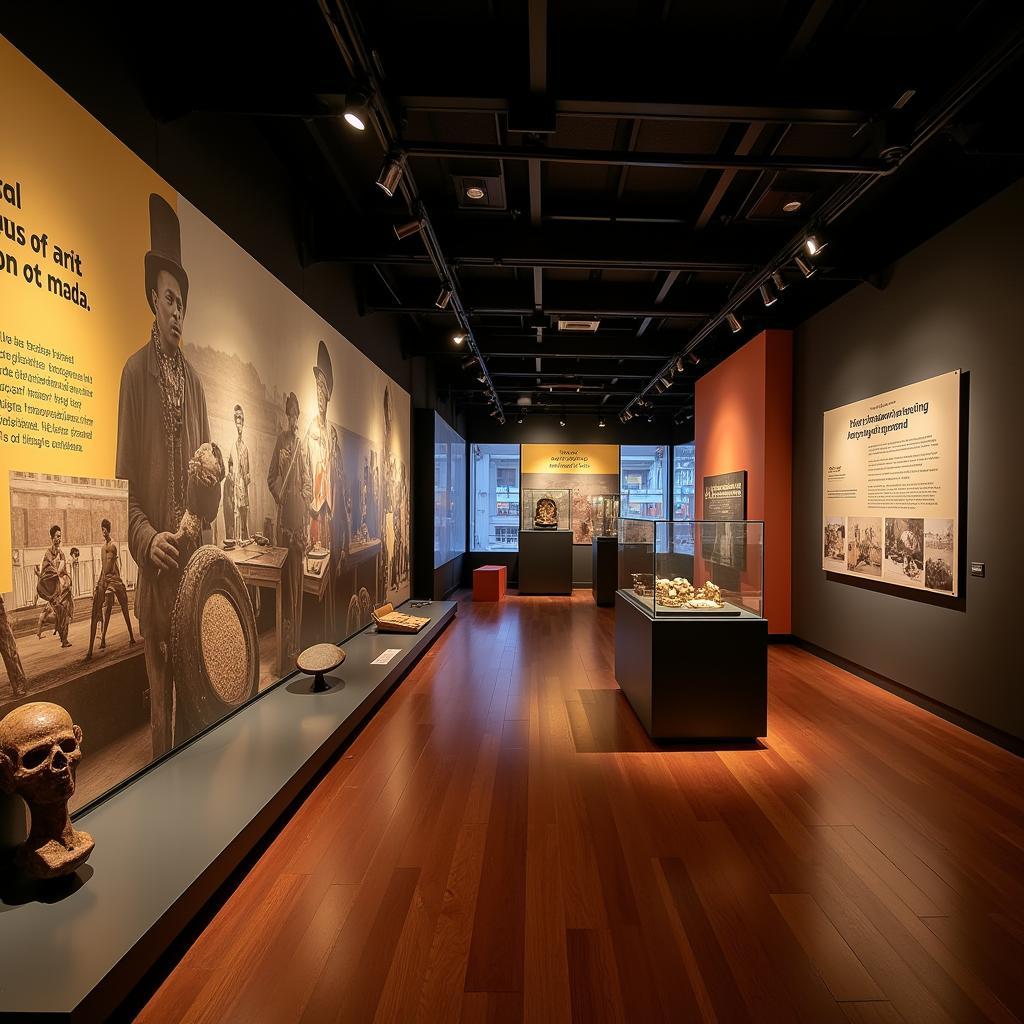African American Schools: A History of Struggle and Triumph
African American Schools have played a pivotal role in the fight for equality and educational justice in the United States. Despite facing immense challenges, these schools have served as centers of community, resilience, and empowerment for generations of Black Americans.
This article delves into the history, challenges, and triumphs of African American schools, exploring their impact on the educational landscape and the ongoing efforts to ensure equitable access to quality education for all Black students.
The Rise of Segregated Schools
Prior to the Civil War, education for African Americans was largely nonexistent, with only a handful of private schools operating in select cities. However, the abolition of slavery and the passage of the 13th Amendment created a new wave of opportunities for Black education.
The Birth of Separate but Equal
Despite the advancements of the Reconstruction era, the rise of Jim Crow laws in the late 19th century ushered in an era of segregation that drastically impacted the quality of education available to Black Americans. The infamous “separate but equal” doctrine, established by the Supreme Court in the 1896 Plessy v. Ferguson case, legitimized the creation of segregated schools.
These schools were often overcrowded, underfunded, and lacked adequate resources compared to their white counterparts. Black teachers were often paid less, and the curriculum often focused on vocational training rather than academic rigor.
The Struggle for Equal Opportunity
Despite the daunting circumstances, Black communities across the country rallied to create their own schools. These schools became not only centers of learning but also vital hubs for community building and cultural preservation.
The Role of Black Educators
Black educators, many of whom had limited formal training themselves, played an instrumental role in shaping the educational experiences of Black students. They were dedicated to providing quality education while also instilling in their students a sense of pride and resilience in the face of adversity.
“Black educators were not only teachers but also role models, mentors, and community leaders,” says Dr. Evelyn Davis, a renowned historian of African American education. “They understood the importance of fostering a sense of self-worth and instilling a belief in the power of education.”
The Legacy of Segregation
While segregated schools existed for decades, they never received equal funding or resources, which ultimately led to an educational gap between Black and white students. The consequences of this disparity continue to be felt today, with Black students still facing significant challenges in accessing quality education.
The Impact on the Black Community
The legacy of segregation has had a profound impact on the Black community. It has resulted in systemic inequalities in access to resources, educational opportunities, and socioeconomic mobility.
“The history of African American schools is not just a story about education; it’s a story about resilience, determination, and the fight for justice,” says Dr. James Johnson, a leading scholar in African American studies. “These schools represent a testament to the enduring spirit of Black communities in the face of oppression.”
The Fight for Desegregation
The Civil Rights Movement of the 1950s and 1960s brought a new wave of activism aimed at dismantling segregation in all areas of life, including education. The landmark Brown v. Board of Education decision in 1954 declared state-sponsored segregation in public schools unconstitutional.
The Challenges of Integration
While the Brown decision was a historic victory, the process of desegregation was long and fraught with challenges. Resistance from white communities, “white flight” from integrated schools, and the continued underfunding of Black schools all hindered the progress towards true equality in education.
The Ongoing Struggle for Equity
Even after the official end of segregation, African American schools continue to face significant challenges. Persistent disparities in funding, access to resources, and teacher quality create a gap in educational outcomes for Black students.
The Need for Systemic Change
The solution to the educational disparities faced by Black students lies in addressing the systemic inequities that continue to permeate the education system. This includes ensuring equitable funding for all schools, recruiting and retaining diverse teachers, and providing culturally relevant curriculum.
african-american-schools-history-segregation|A classroom of African American students in a segregated school in the early 20th century.|This image depicts a typical classroom in a segregated African American school in the early 20th century. The students are seated at desks, listening intently to their teacher, who is a Black woman. The classroom is modestly furnished, with limited resources. This image represents the challenges faced by African American schools during this period, including underfunding, overcrowding, and a lack of access to quality education. It also highlights the dedication of Black teachers who worked tirelessly to provide their students with the best possible education despite the constraints they faced.
The Future of African American Education
The future of African American education rests on the shoulders of educators, policymakers, and community members who are committed to dismantling the systemic barriers that prevent all Black students from achieving their full potential.
The Importance of Cultural Relevance
It is crucial to create educational environments that are culturally relevant and responsive to the unique experiences and needs of Black students. This includes incorporating Black history and culture into the curriculum, celebrating Black voices, and providing opportunities for students to connect with their heritage.
The Power of Community
African American schools have always been centers of community, and this aspect will remain vital for the future of Black education. By fostering strong relationships between schools, families, and communities, we can create supportive environments that empower students to succeed.
FAQ
1. Why were African American schools segregated?
African American schools were segregated as a result of Jim Crow laws and the “separate but equal” doctrine, which allowed for the separation of Black and white Americans in all areas of life, including education. This doctrine was based on the belief that Black people were inherently inferior to white people and that their races should be separated.
2. What were the challenges faced by African American schools?
African American schools faced numerous challenges, including:
- Underfunding: They were consistently underfunded compared to white schools, leading to inadequate facilities, resources, and teacher salaries.
- Overcrowding: They were often overcrowded, with classrooms and schools lacking adequate space and resources.
- Lack of access to quality education: They offered limited access to quality education, with curricula that were often focused on vocational training rather than academic rigor.
3. How did African American schools contribute to the Civil Rights Movement?
African American schools played a crucial role in the Civil Rights Movement by serving as centers of activism, organizing, and education. They were places where Black communities gathered to discuss issues of equality, plan protests, and raise awareness about the injustices they faced.
4. What are some ways to improve the quality of education for Black students today?
Improving the quality of education for Black students today requires a multi-pronged approach, including:
- Equitable funding: Ensuring that all schools, regardless of race or socioeconomic status, receive equitable funding.
- Diverse teacher workforce: Recruiting and retaining diverse teachers who reflect the students they serve.
- Culturally relevant curriculum: Implementing culturally relevant curriculum that honors Black history, culture, and perspectives.
5. What is the importance of Black history in education?
Black history is essential in education because it provides a more complete and accurate understanding of American history, highlighting the contributions, struggles, and triumphs of African Americans. It also helps students understand the systemic inequities that continue to exist today and empowers them to be agents of change.
african-american-schools-future-equality|A group of diverse students laughing together in a classroom.|This image depicts a group of diverse students laughing together in a classroom. It represents the ideal of a future where all students, regardless of race or background, have access to quality education in inclusive and equitable environments. The image symbolizes the importance of fostering a sense of belonging and community in schools, where students from different backgrounds can learn, grow, and succeed together.**
African American schools have come a long way since their inception. While challenges persist, the spirit of resilience and determination that characterized these institutions continues to inspire a brighter future for Black education. By acknowledging the historical struggle, embracing the lessons of the past, and working collaboratively towards a more just and equitable society, we can create a future where all students, regardless of race, have the opportunity to reach their full potential.

